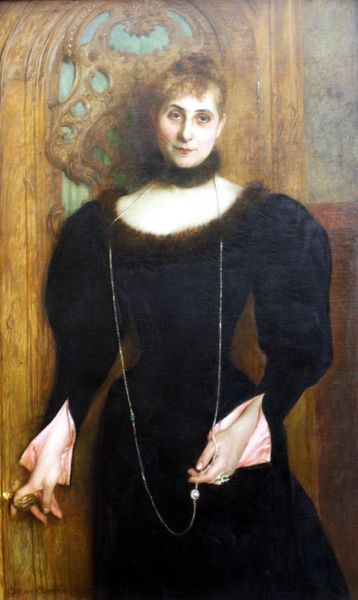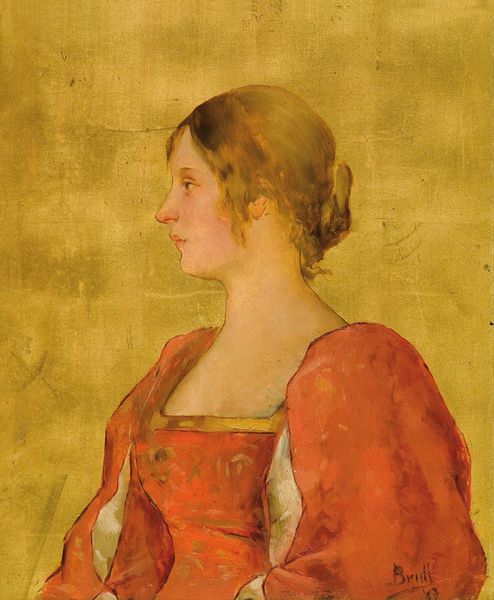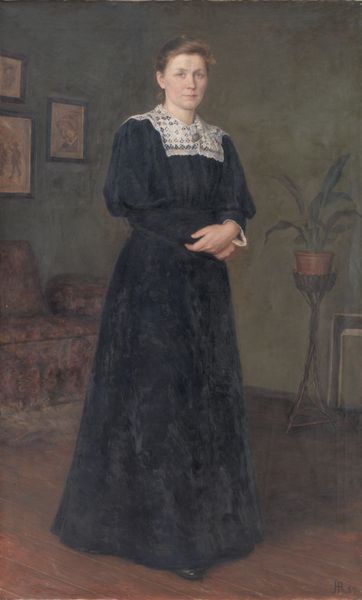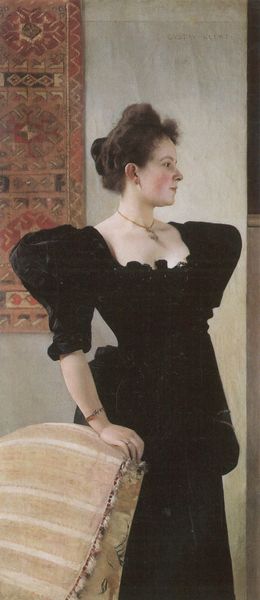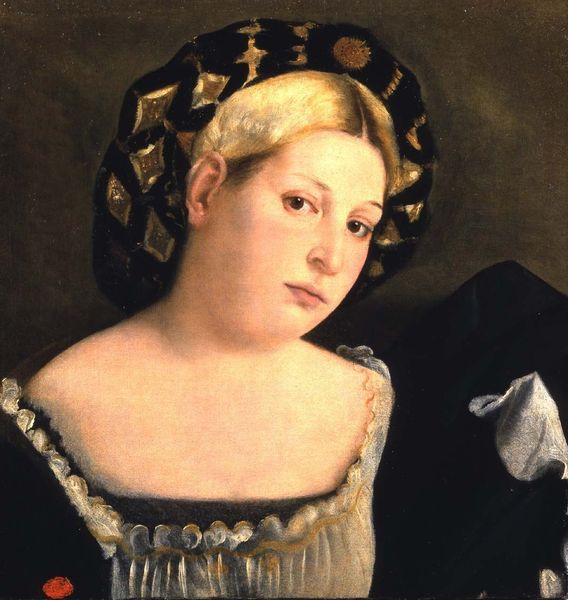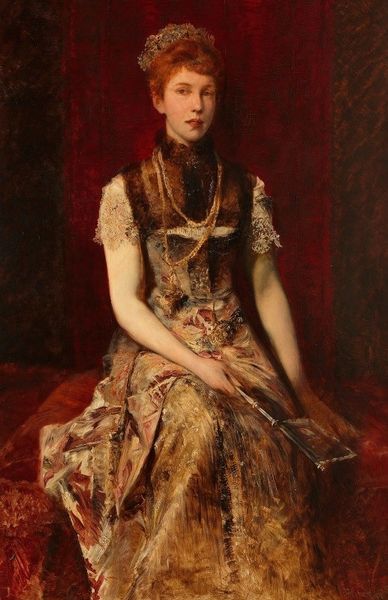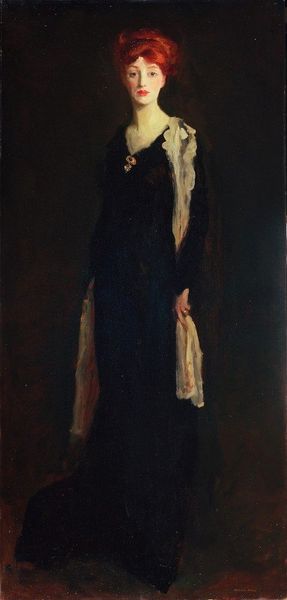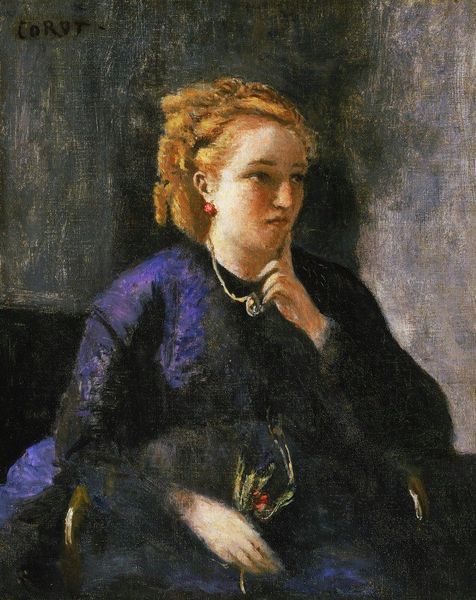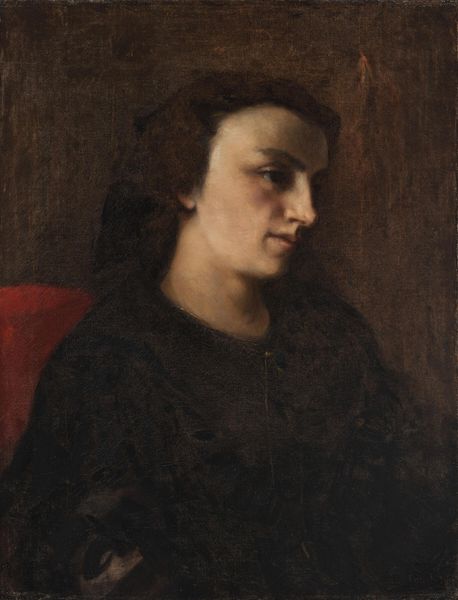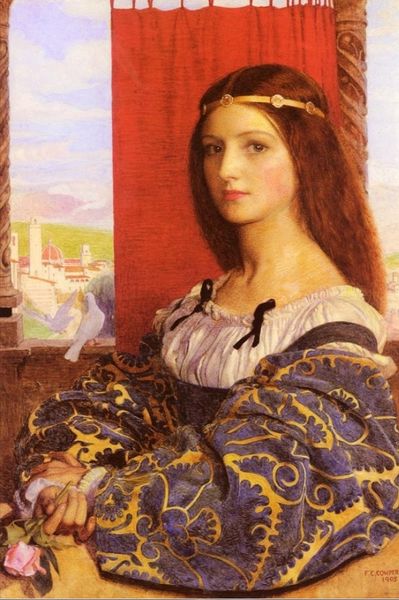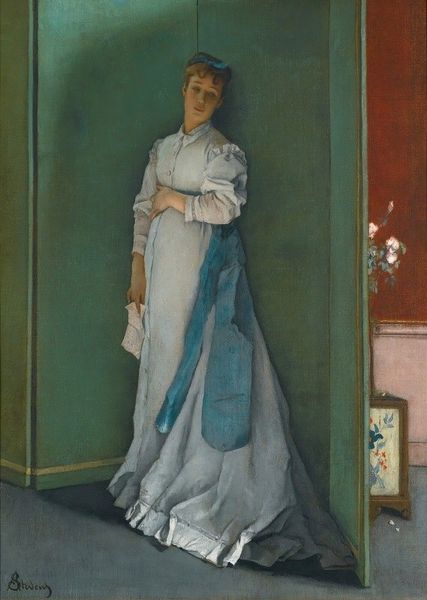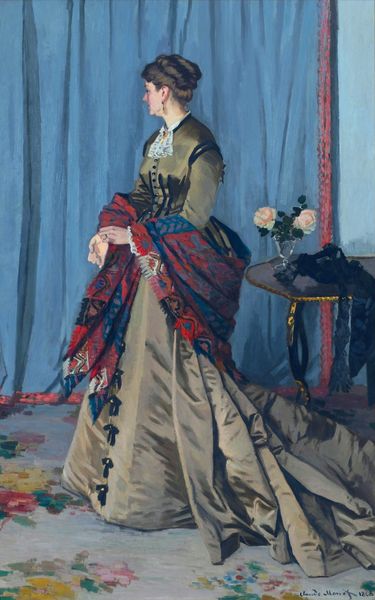
Copyright: Public domain
Curator: This is Jean Benner’s “La France pour toujours!” completed in 1871, executed in oil paint. Editor: It's quite striking; I immediately notice the palpable sense of melancholic longing in the woman's upward gaze, contrasting with the richness of that almost Byzantine gold backdrop. Curator: Note the compositional structure. Benner utilizes a strong vertical orientation. The young woman is centered, drawing the viewer's eye directly to her face and the details of her traditional Alsatian dress. Her gaze is positioned precisely in the upper portion of the frame, accentuating the sense of hope or aspiration. Editor: The fact that it was painted in 1871—a year marking the end of the Franco-Prussian War, with France ceding Alsace-Lorraine to Germany—is critical to interpreting that gaze. It’s not just aspiration; it's an expression of cultural and national grief and resilience, specifically for Alsatian identity. The Tricolore rosette attached to her headdress only reinforces this. Curator: Precisely, and Benner emphasizes that sentiment through the use of color. The muted tones of the clothing, primarily black and white, provide a somber foundation, setting off the subtle vibrancy in her complexion and auburn hair, giving her a transcendent, spiritual aura. Observe, also, the subtle details in the lace and embroidery; minute details that contribute to an overwhelming impression of beauty despite historical tragedy. Editor: The symbolism is potent. She embodies the spirit of Alsace, a region torn between two national identities. The averted gaze is key, rejecting present circumstance, and instead yearning for what’s lost or could be regained. It's an intersection of regional identity, nationalism, and even femininity under duress. Her clasped hands too signify both powerlessness and determination to stay strong, to hold onto tradition and to resist colonial erasure. Curator: The gold background acts as both halo and void. Editor: A gorgeous, complex portrait where visual language profoundly reinforces historical context, creating a deeply emotive and compelling narrative about nationalism and occupation. Curator: I find the controlled palette lends the work both intimacy and monumental grandeur. It encapsulates collective mourning within one human figure.
Comments
No comments
Be the first to comment and join the conversation on the ultimate creative platform.
